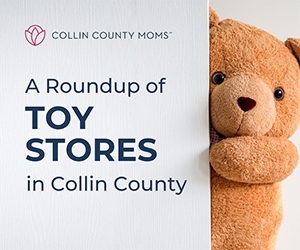I believe the children are our future. Teach them well and let them lead the way. Show them all the beauty they possess inside. Give them a sense of…oh, sorry, I was channeling Whitney Houston there for a moment.
Seriously though, as moms, we have one thing in common: We want to raise happy, healthy humans. In Emotion Agility by Susan David, Ph.D., a book I highly recommend, she points out that helping a child develop emotional intelligence is no small feat, and yet it’s pretty simple when you get down to it. Susan even goes so far as to say, “Emotional agility is like a vaccine that helps inoculate kids against being overwhelmed by the unpleasantness that life no doubt has in store for them.” Whoa…that’s pretty huge.
 So, what can we do to help prepare our kids to develop the resiliency they need to flourish in an otherwise overwhelming and sometimes cruel world?
So, what can we do to help prepare our kids to develop the resiliency they need to flourish in an otherwise overwhelming and sometimes cruel world?
Developing Your Child’s Emotional Resilience
Help change your child’s relationship with fear.
Kids don’t have as much experience about life, so of course, they’re understandably freaked out by new and different experiences. What we as parents can do is have a conversation with them about courage, which is not the absence of fear, but the joining of emotion. It’s essentially saying feel the fear and do it anyway. When you encourage kids to saddle up next to their emotion, face it, feel it, and simmer in its juices for a bit, they can wrangle up courage to realize this emotion is, well, just an emotion. And it becomes easier to face some of their most challenging situations.
Model what you want to teach.
Do step one above in YOUR OWN LIFE, because your kids are watching (gulp). I can’t tell you how many times I find out in the counseling room that well-rounded, wise, smart adults actually aren’t comfortable feeling their emotions for any real length of time. And it’s usually because they weren’t taught how to do that. The only way kids become comfortable with their emotions is because they hear the language of emotion, see “feeling behaviors,” and experience the full range of emotion freely. As an example, when parents tell me they try not to get angry around their kids, or have disagreements with their spouse when the kids are around, I’ll ask, “Well, then how are they going to learn how to be angry and be in conflict?”
Be emotionally present.
When your child is going through something, stop trying to fix it. Recently, I had a friend confide in me that she was frustrated her teenage son was staying stuck in negative emotion for far longer than she thought he should. My advice to her was, “Well, he’s just not ready to come out of the weeds yet, so you need to go in there with him. Then, let him lead the way out.” As crazy as that sounds, your child, especially your teenagers, gain resilience when they can figure out how to get themselves out of some sticky situations. Often (not always), what they need more than anything is for you to be there with them, not for them. In other words, let them know all those emotions are normal and okay, and you’ll be here as long as they need to be so they can see themselves out.
Encourage autonomy.
I can’t stress enough, that when you put too many restrictions on your child, and for reasons they can’t find valuable and reasonable, they will rebel. Think about why you are creating the rules you’re creating, or better yet, create rules in tandem with your child. Let them feel like they are in charge of their own outcome because largely, they are. Recently, one of my own teenagers did something that needed a consequence, so I just asked her, “What do you think a good consequence would be for that?” And she said, “To take my phone away?” So, I took her phone away. She hated it, but she also couldn’t deny that she created that scenario for herself. It was a logical consequence that encouraged her own decision-making. That’s autonomy.
Brainstorm how to move on.
In all situations, help your child brainstorm their own consequences by allowing them to go deeper than you normally would. Questions here sound like, “And then what will happen? And then what? And then?” Encourage your child to have deeper thinking by allowing them to move into some deeper emotion around whatever is bothering them. Allow them to “come to” why they feel the way they do by giving them the physical space and emotional acceptance to brainstorm their own issue. I had a friend tell me recently that she wasn’t sure how to approach a difficult situation with her child, and I suggested she start with the question, “What did you hear so-and-so say during that conversation? And then? And then?” Have them go continue until they find a deeper, more meaningful end.
Emotional intelligence is so important. And our kids depend on OUR ability to be emotionally intelligent. Use these steps to help your child understand and appreciate their emotions.














I always love your posts Jennifer. Thank you so much. All I needed to read these days.